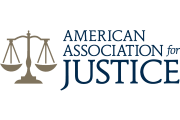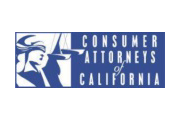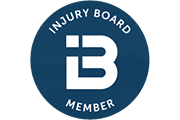by: Claude A. Wyle – September 28, 2011
As a lifelong bicyclist, I know the feeling — the rush of air, the feeling of heat rising, and a car suddenly passing dangerously close. It doesn’t matter if it’s a rural road or crowded urban city street. When the motorist makes contact, the bicyclist loses.
A proposed new law offers some stronger protection from bicycle accidents: provision SB 910 which adds to section 21750.1 of the California Vehicle Code. Some are calling it the “3 feet and 15mph law.” The provision requires
The driver of a motor vehicle overtaking a bicycle proceeding in the same direction shall pass to the left at a safe distance, at a minimum clearance of three feet, at a speed not exceeding 15 miles per hour faster than the speed of the bicycle, without interfering with the safe operation of the overtaken bicycle.
It is supported by the California Bicycle Coalition.
In the old days — well, not that long ago, in 1980 — if you reported such a passing, even if it scared you when a vehicle passed you with only inches to spare, a report would only generate a response such as “the passing distance must have been safe if they didn’t hit you.” With the proposed safe passing law, cyclists have a stronger case for liability. More importantly, this may prove to be a deterrence to those motorists who would risk bicycle safety with a close pass.
The California Legislature took its final vote to approve SB 910 on September 8, 2011. The bill has been sent to California’s Governor Brown to be signed into law.
Too many Californians who want the health, environmental and economic benefits of riding a bicycle for transportation or recreation avoid riding their bikes because they feel uncomfortable about trying to share the road with motor vehicles, especially when they see cars and trucks pass bicyclists too closely. Their discomfort is not simply a perception. When a driver passes too closely, the slightest error by the driver or the most minor shift by the bicyclist to avoid trash, broken glass, or rough pavement can lead to a collision. This type of collision is the leading cause of adult bicyclist fatalities in California and the U.S, according to the California Bicycle Coalition. The point in fact, is the recent bicycle accident where a San Francisco Muni bus ran over a bicycle rider’s arm because she moved slightly to her left to pass a double-parked car.
Existing law requires drivers to pass other vehicles and bicycles at a “safe distance” but doesn’t specify what that distance is.
The safe passing law will require drivers to give bicyclists more space when passing, which will minimize a leading cause of deadly collisions and help more people feel comfortable about choosing to ride their bikes. The bill specifically requires drivers to give bicyclists at least 3 feet of space when passing from behind. The bill modifies existing state law that requires a driver to maintain an unspecified safe distance when passing another vehicle or a bicycle.
A specified passing distance provides drivers with a more objective and easily understood measure of what constitutes “safe” and gives law enforcement and the courts a more objective basis for enforcing California’s safe passing requirement. Most importantly, it helps emphasize a driver’s special responsibility to safeguard more vulnerable road users like bicyclists.
The California Legislature took its final vote to approve SB 910 on Sept. 8. The bill has been sent to the Governor to be signed into law.
Along with this new bill, the existing California Vehicle Code relating to bicycles follows:
Roadway: Bicyclists traveling slower than the normal speed of traffic must ride as close to the right side of the road as safely possible, except when passing, preparing for a left turn, avoiding hazards, or if the lane is too narrow. CVC 21202
Bicycle lanes: On a roadway with a bike lane, bicyclists traveling slower than traffic must use the bike lane except when making a left turn, passing, avoiding hazardous conditions, or approaching a place where a right turn is authorized. CVC 21208
Direction of travel: Bicyclists must travel on the right side of the roadway in the direction of traffic, except when passing, making a legal left turn, riding on a one-way street, riding on a road that is too narrow, or when the right side of the road is closed due to road construction. CVC 21650
Motorized bicycles: Motorized bicycles may not be used on trails, bike paths or lanes unless allowed by local authorities. CVC 21207.5
Bike path obstruction: No one may stop on or park a bicycle on a bicycle path. CVC 21211
Sidewalks: Individual cities and counties control whether bicyclists may ride on sidewalks. CVC 21206
Freeways: Bicycles (including motorized bicycles) may not be ridden on freeways and expressways where doing so is prohibited by the California Department of Transportation and local authorities. CVC 21960
Toll bridges: Bicyclists may not cross a toll bridge unless permitted to do so by the California Department of Transportation. CVC 23330
Brakes: Bicycles must be equipped with a brake that allows an operator to execute a one-braked-wheel skid on dry, level, clean pavement. CVC 21201(a)
Handlebars: Handlebars must not be higher than the rider’s shoulders. CVC 21201(b)
Bicycle size: Bicycles must be small enough for the rider to stop, support it with one foot on the ground, and start safely. CVC 21201(c)
Lights: At night a white headlight visible from the front must be attached to the bicycle or the bicyclist. CVC 21201(d) and CVC 21201(e)
Reflectors: At night bicycles must have the following reflectors:
Seats: All riders must have a permanent, regular seat unless the bicycle is designed by the manufacturer to be ridden without a seat. Bicycle passengers weighing less than 40 lbs. must have a seat that retains them in place and protects them from moving parts. CVC 21204
Helmets: Bicyclists and bicycle passengers under age 18 must wear an approved helmet when riding on a bicycle. CVC 21212
Headphones: Bicyclists may not wear earplugs in both ears or a headset covering both ears. Hearing aids are allowed. CVC 27400
Alcohol and drugs: Bicyclists may not ride while under the influence of alcohol or drugs. CVC 21200.5
Hitching rides: Bicyclists may not hitch rides on vehicles. CVC 21203
Carrying articles: Bicyclists may not carry items that keep them from using at least one hand upon the handlebars. CVC 21205
Pedestrians: Bicyclists must yield the right-of-way to pedestrians within marked crosswalks or within unmarked crosswalks at intersections. Bicyclists must also yield the right-of-way to totally or partially blind pedestrians carrying a predominantly white cane or using a guide dog. CVC 21950 and CVC 21963
Parking: Bicyclists may not leave bicycles on their sides on the sidewalk or park bicycles in a manner that obstructs pedestrians. CVC 21210
About the author: Claude Wyle is an aggressive advocate for Bay Area bicyclists. Claude has decades of experience representing those harmed by the wrongful conduct of others, and, as a Marin County bicyclist and San Francisco bicycle accident attorneys, has fought to protect the rights of injured cyclists throughout his legal career. Claude is also an avid cyclist himself and a member of the Marin County Bicycle Coalition, San Francisco Bicycle Coalition, and Silicon Valley Bicycle Coalition and is a sponsor of Safe Routes to School.





